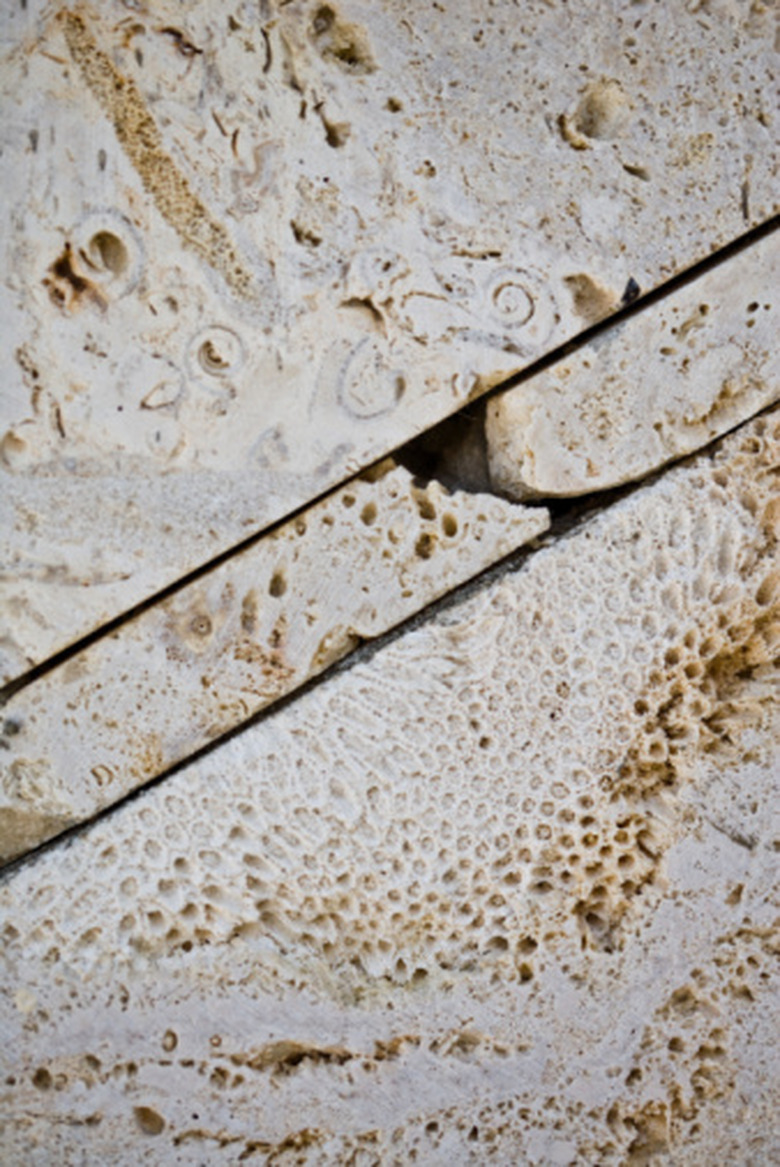How To Paint Limestone
Things Needed
-
Protective gloves
-
Specialist cleaner
-
Stiff cleaning brush
-
Alkaline-inhibiting primer/sealer
-
Paintbrush
-
Paint roller
Tip
Consider painting limestone with sympathetic, natural colors. Ask your paint supplier for details of suitable masonry exterior paints.
Warning
Wear protective gloves when using specialist cleaners and paint primers and sealers.
Painting limestone can give your masonry a bright, new look. Limestone is a sedimentary rock formed of highly alkaline calcites, so thorough preparation is an essential first step before painting limestone. The prospect of painting limestone masonry may be daunting at first, but you can achieve an excellent finish by treating the rock with a specialist cleaner and an alkaline-inhibiting paint primer.
Step 1
Wash the limestone surface with either soapy water or a specialist trisodium phosphate-based cleaner (TSP), which helps to remove dirt and grease. Wear protective gloves if you use TSP. Scrub the surface with a stiff brush to remove any loose materials or dust. Start at the top of the wall and work your way down. Leave the surface to dry.
Step 2
Apply an alkaline-inhibiting paint primer/sealer. For flat limestone surfaces, use a regular paintbrush. For craggy or highly textured limestone surfaces, use a paint roller. Take care to dab the primer/sealer into all crevices. Using a primer/sealer helps coats of paint stick to the surface and prevents moisture and water damage. You may need to apply two coats of primer/sealer. Wait for the first coat to dry before applying the second.
Step 3
Paint the treated limestone surface with specialist masonry paint, using either a regular paintbrush for flat surfaces or a medium-nap paint roller for textured and rough surfaces. You will usually need to apply more than one coat of masonry paint. Wait for the first coat to dry before applying the final coat.
References
- "Collins Complete DIY Manual"; Albert Jackson, David Day; 1993
- Home Improvement: Do I Need to Use Paint Primer?
